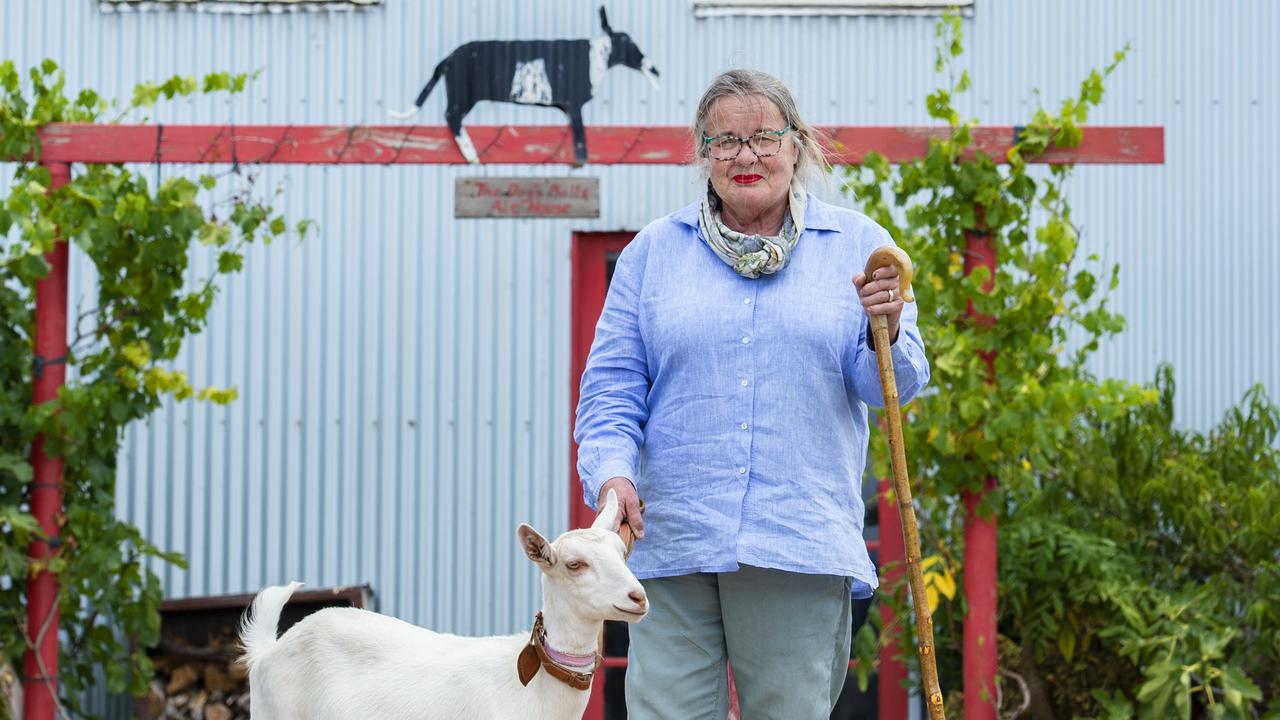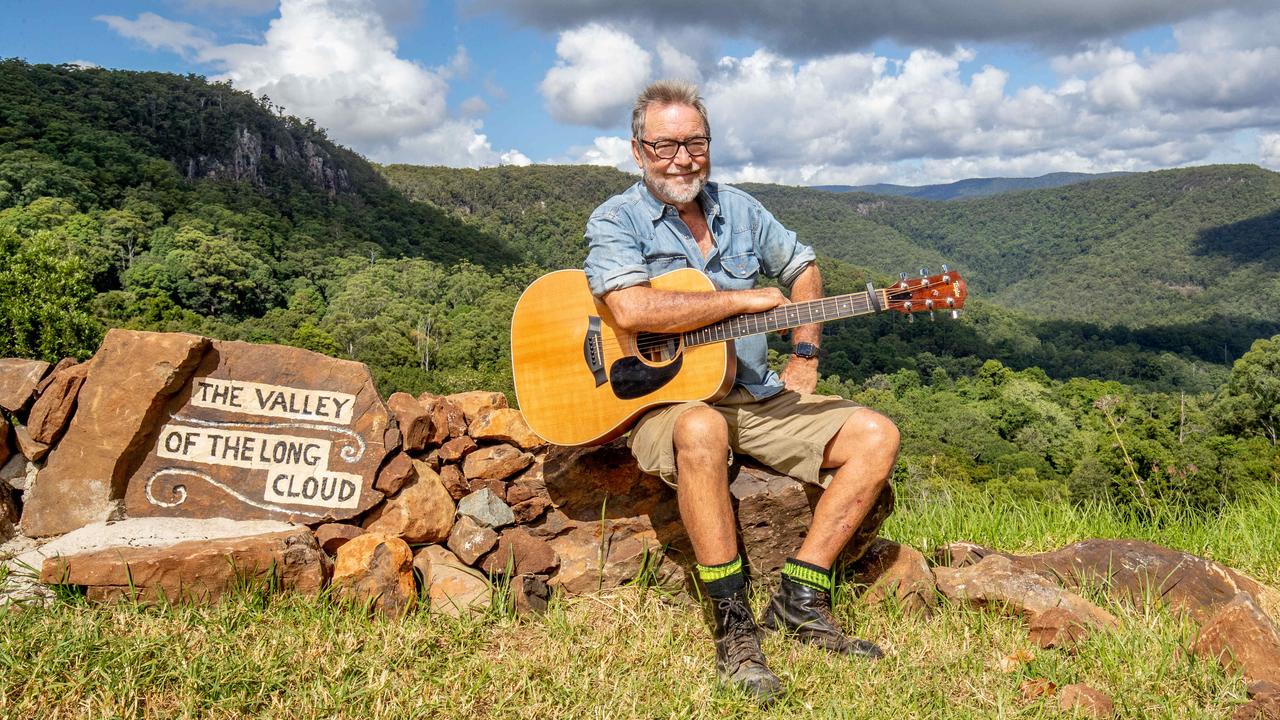Shandonvale Station in Outback Queensland bridges a city-rural divide
A drought-plagued Outback Queensland station has hit paydirt by opening its doors to tourists. And it’s been as eye-opening for the owners as it has for the visitors.
WHEN Deon and Lane Stent-Smith opened their 6500ha Outback station to visitors, they were surprised at the disconnect city dwellers had to the rural landscape.
Three years after first welcoming guests to stay in their historic shearers quarters, that surprise has only grown.
“There are people in their 40s and 50s who have never seen a clear vista of the stars, people from the city who have never seen a green frog, or driven on a dirt road,” Deon says.
“In the past, 40 years ago, everyone had a relative in the country and so still had some sort of connection but that has now gone.
“There’s a big disconnect between the city and bush and it’s getting wider and wider.
“Kids who come here don’t know where milk comes from and think meat is wrapped in plastic from the supermarket.
“They don’t understand how the world works and are sheltered from it.
“They think farmers are barbaric, and don’t realise that if something is your livelihood you take absolute care of it.”
The couple say while they opened their Shandonvale Station farm experience — 90 minutes out of Longreach in the heart of Queensland — as a diversified income in the face of drought, ultimately it has become an educational experience.
Shandonvale Station was established in the early 20th century, originally as a Merino property.
The Stent-Smiths bought it in 2007.
Lane grew up in the Darling Downs and was a vet nurse, while Deon had grown up on a cattle property west of Townsville.
He had spent time as a kangaroo shooter and also leading buffalo game hunting tours in the Northern Territory.
He says when they arrived at the run-down Shandonvale Station they initially installed water infrastructure, cleared the land and mustered feral goats.
For seven years they ran cattle until the drought hit in 2012.
Usually their area’s average annual rainfall is 480mm, but over the past eight years the yearly average has plummeted to 165mm.
They were forced to switch from cattle to sheep, now running 2500 White Dorper ewes.
Given the wild dog threat, they erected 35km of exclusion fencing, and also run 25 guardian donkeys that chase and kill wild dogs.
The Stent-Smiths are self-sufficient with pigs for meat and their own homemade smoked goods; deer for venison; cows for milk and meat; and an extensive vegetable garden and orchard.
They also run about 160 domesticated wild camels to control prickly acacia, an introduced pest plant, but with camel meat a delicacy.
“Camel is the Wagyu of the outback,” Deon says.
“It’s exactly like beef, but better,” he says.
“You can have camel steaks that are marbled with a score of eight, or mince, eye fillet, porterhouse. We also make our own sausages.”
He says while the camels do a good job cleaning weeds, he will need to reduce numbers this year and plans to walk a mob of about 100 350km to the abattoir at Winton around April.
“It’s cheaper to walk them than get a chopper and muster them, or get an open deck truck road train.
“A full camel dressed is worth about $350, so it’s not worth much by the time you transport it there.
“Walking them will only take a couple of days anyway.”
It’s those kinds of farming experiences that visitors to Shandonvale Station get an insight into.
Deon says they opened their renovated shearers quarters to guests in 2017 as an extra income stream. Accommodation is available from April 1 to October 1. A couple will be charged $240 each per night, or it’s $1700 per night for a group of up to eight people (minimum two-night stay).
Guests are served a breakfast hamper (with all produce from the farm, including camel sausages) and have dinner at the couple’s homestead. They will also take part in farm duties, fire guns at the shooting range, have champagne at the station’s artesian bath and generally “have a yarn”.
“We’re an hour and a half from Longreach where thousands of tourists go a year for the Stockman’s Hall of Fame, Qantas and dinosaur museum, but they don’t leave the bitumen.
“When I worked on buffalo hunts there were tourists from the US and Europe willing to pay $15,000 for seven days, sleeping in a tent in the middle of Arnhem Land. People want this kind of experience.”
The 31-year-old says visitors don’t interrupt the farm work, and while he aims to educate them about farm life, he also questions them about their lives.
“People ask me if we get tired of hosting guests, but in a drought, out here, you’re really removed from the population.
MORE
NOTHING CAN RIVAL A COUNTRY PRACTICE
“It’s not like we can get off-farm work and drive 150km into town and back each day.
“Drought is not what kills you, it’s the isolation that kills people in the bush, especially in drought because you can’t leave the property and have stock fed.
“This way I get to meet people from all over Australia and the world and it’s not just they who are asking the questions.
“It goes both ways.”


